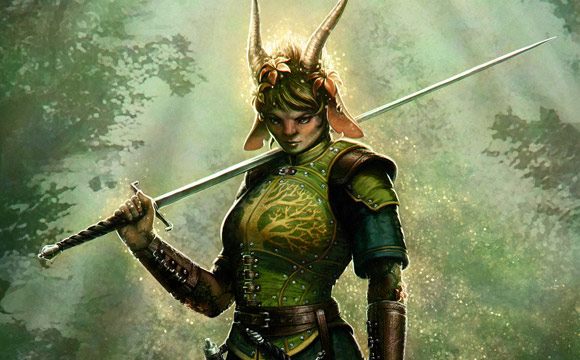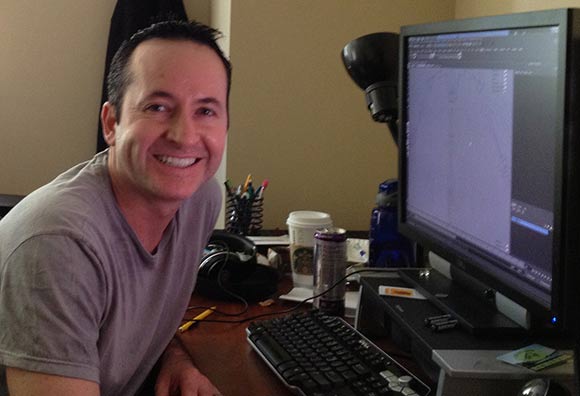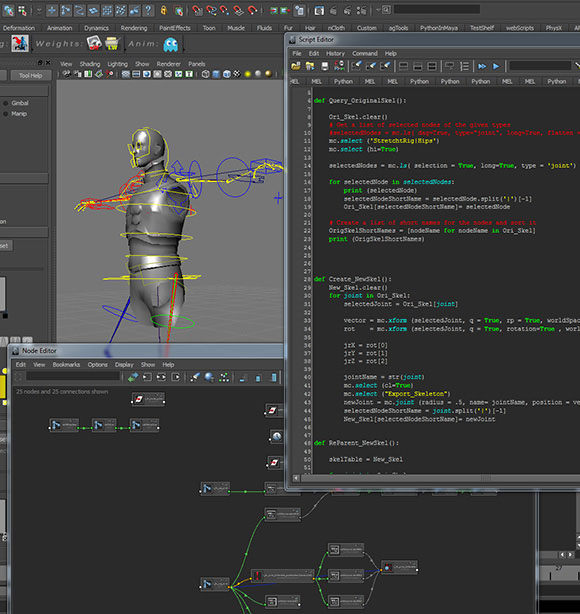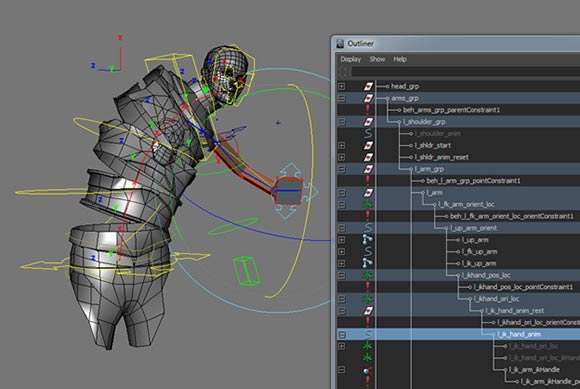Rob Nesler, Project Eternity's Art Director
Hello everybody it's me again, Rob Nesler, Art Director on Project Eternity. I had intended on presenting our Art Style document to the world by this update, but it still needs work. So, you have to wait a bit longer for it. So that’s sad. However, with the last art update, I glossed over our Technical Animator Antonio's work 'cause it was 3 o'clock in the morning and I couldn't think about how to describe intelligently what Antonio does for us. Some of you professed extensive knowledge of rigging and skinning, as well as profound disappointment in my patronizing tone, and demanded to be better informed of this horribly complex facet of game development. So...okay!
Before that we have some eye candy.
A Godlike concept by Polina (click to see full size image):

And noooooo...you can’t have a larger version. Google "estoc" if you want a sense of the weapon she's holding.
The godlike are the children of humanoids (most often humans) who have been "blessed" (or cursed, depending on personal or social view) with the physical manifestation of a divine spark granted by the gods. Godlike manifest their divine heritage in a variety of ways: wings, horns, strange birthmarks, talons, odd eyes - but they always manifest it somehow. BTW, in case you missed it, this is a playable "race". Below are some further examples of the possible deviations/conditions they inherit:

Okay back to technical animating.
If you recall, in the last update, I wrote this little nugget:
Quote
"Antonio Is our Technical Animator. He makes rigs, writes scripts that make rigs, and rigs the rigs. It’s all very technical. You wouldn’t understand. He’s a professional."
Some of you wanted more... so... here’s more.

His primary responsibility is rigging and weighting characters for skinned forward kinematic and inverse kinematic animation. Daily, he also uses his expert technical knowledge of animation techniques and the underlying idiosyncrasies of 3D animation software to assist our animation team as a problem solver, a mentor, and a scripter to improve animator workflow and overcome deficiencies in the applications we use. So that sounded intelligent; vague and awkward, but intelligent.
So, specifically ROB, what does Antonio do that will make Project Trenton/Eternity awesome?
Generally, technical animators program scripts using languages like MEL or Python to extend or enhance the functionality of existing off-the-shelf apps like Maya, Max, or Softimage. These scripts are often programs running within the larger app, but sometimes they are utilities that exist outside the application to assist in conversion or batching operations. These often can be purchased, but sometimes they themselves don’t have all the features our animators want so...

NO! Specifically ROB! What the hell does he do???
Okay, okay, for Project Trenton/Eternity Antonio has written, a few, and re-written a couple times the following, and it's all called DNA (Design New Actor).
Firstly, there is the Export Rig, and this is not so unique to 3D character animation. This is a highly optimized skeleton that represents only the bones that the actual actor mesh is weighted to. For a humanoid character these bones would be named: Pelvis, Femur_Rt and Femur_Lt., etc. Vertices of the visible textured geometry, that the player sees, are all attached to these bones with various amounts of strength, so the character will appear to bend and flex more naturally. Sometimes these bones will have physics applied to them, like pony tails. This is less a rig and more of: simply the skeleton that the other rigs interact with, but these are the only bones that go into the game, and we call it the "export rig". Antonio builds this skeletal hierarchy to fit the expected proportions of the character, and character modelers build character meshes to match visible body parts to the locations of bones, so that -- for example -- the bendy part between the upper_arm_rt and lower_arm_rt ends up being where a humanoid creature, as designed, would expect an elbow to be.

Then there is this nifty rig that was discussed a little bit, a couple updates ago — fricken’ Adam (PE's Executive Producer) always stealing my thunder! I think we call it the “stretch rig”. As he mentioned, it allows Dimitri, our dutiful Character Lead, to scale, even non-proportionally (with volume adjustments) meshes with the export rig already weighted. This way we can make a human character mesh, rig him to a human-proportioned skeleton, animate him, then take that same character and deform him to a new size and proportion, export him and use the same animations that were created for the human on this newly scaled/deformed mesh. This is a very useful asset multiplier, which allows us to leverage costly armor set and animation development across the spectrum of our races.

...And last, but most certainly not least, we rely on Antonio for creating rigs that provide controllers that allow the animators the maximum amount of flexibility when creating animations. These 'control rigs' are specialized for each character/creature type, after they've been stretched. They provide controls for jumping, crouching, twisting, grabbing, etc. They provide inverse kinematic and forward kinematic transformations, physics blending, following, squeezing, etc.-- whatever is required, actually. These controllers and extra bones are for animator manipulation only; they do not get exported. That's why when I said, "he rigs the rigs" I wasn't actually joking. These are rigs of rigs. These are the animator’s most essential bread and butter. Using these tools is how they actually create character animation.

And that's it. The update is over. I know, not so fun, but this is serious stuff.
We’ll show some animated examples sometime in the not-too-distant future.
Rob Out!
